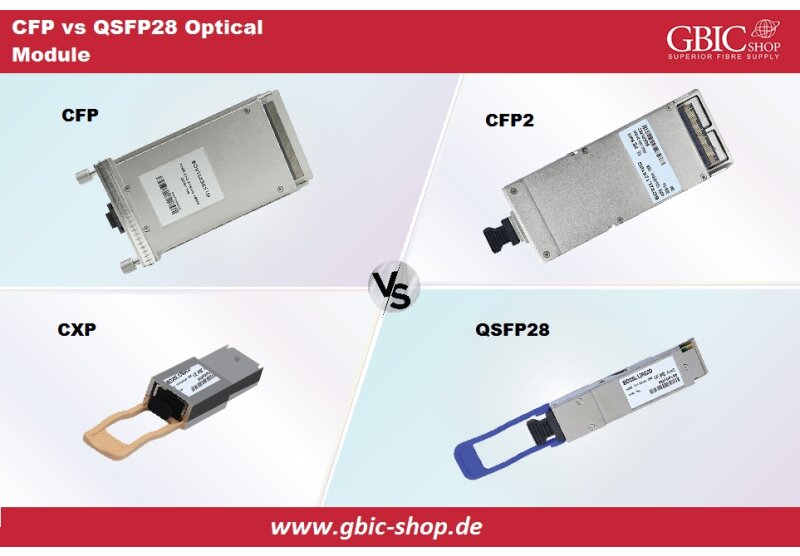The communication between any two end-points is based on some standard language which can be understood by both. In information technology world, these standards are called protocols. A protocol is a networking language which is used to transmit and receive the message between two communicating devices. Each protocol has its own way of sending and receiving the signal which is referred to as encapsulation, but in the end, it is all down to bits; 0s and 1s.
In this article, we will discuss few of the most widely used networking protocols which can be used to transmit and receive the messages on transceivers. Data rates and applications of these protocols will also be discussed to enable us to understand the basic working principles of the transceivers that are available in the market.
Ethernet
Ethernet is the most extensively used networking technology. Ethernet is a multi-layer protocol spanning over the physical and data link layer in the OSI model. Ethernet finds its application in every network regardless of its size and scale. From small offices to large government enterprises, ethernet can be seen at work everywhere. Ethernet was first introduced in 1980 and standardized by IEEE (The Institute of Electrical and Electronic Engineers) in 1983. The original version of ethernet was designed to carry 2.94 Mbps of data, since the initial version, ethernet has seen rapid evolution and development. These days the ethernet can be utilized for 100 Gbps data rates.
Ethernet is widely deployed in Local Area Networks (LAN) and Metropolitan Area Networks (MAN). Unshielded twisted pair (UTP) copper cable is used for shorter distances and fiber optic cable is used for longer distance. Ethernet is independent of the carrying medium and the protocol’s structure remains same for both fiber optic and copper cable transmissions.
Transceivers such as SFP, SFP+, GBIC, QSFP, QSFP+ and CFP etc. support the ethernet traffic to be transmitted and received. A wide range of ethernet supported transceivers is available at GBIC-SHOP.
Fibre Channel
Fibre Channel (usually abbreviated as FC) is a technology used for high-speed data transfer. Fibre channel finds its core use in storage area networks (SAN). FC is used to transfer data between computer storages and computer systems or servers. Introduced in the year 1997, FC provided a throughput of 200 Mega Bytes per Second (MBps), now a days, fibre channel can provide data transfer speeds of up to 25600 MBps. FC is a widely used technology, almost all of the high-end servers and storages that are available today, have interfaces to support FC.
Another variant of fibre channel is Fiber Channel over Ethernet (FCoE). FCoE uses ethernet as a transport medium, FC packets are encapsulated over the ethernet network, thus providing data transfer speeds equivalent to the ethernet network’s speed.
Synchronous Optical Networking (SONET) and Synchronous Digital Hierarchy (SDH)
SONET and SDH are technically two names for a single technology; the only difference being the data rates; that was developed to replace the older Plesiochronous Digital Hierarchy (PDH). SDH transmits multiple digital bit-streams synchronously over the fiber optic cable. SDH finds its primary application in long distance optical networks which are used to transmit large amounts of diverse data. Telephone calls and digital data can be carried over a single cable without causing interference or synchronization issues by using the SDH technology. Due to this feature, SDH is also widely used in telecommunication networks.
SONET was standardized by Telcordia and American National Standards Institute (ANSI) as T1. 105 standard. SONET provides data rates in the range above 51.8 Mbps. SONET is widely used in North America and Canada.
SDH was developed as a standard by the European Telecommunications Standards Institute (ETSI) and is formalized as International Telecommunication Union (ITU) standards G.707, G.783, G.784 and G.803. SDH is the prime protocol used by the European world. The basic data rate of SDH is 155.52 Mbps.
SONET and SDH are mainly used over fiber optic, but for shorter distances, electrical wire can also be used for signal transmission.
InfiniBand
InfiniBand, usually abbreviated as IB is a computer-networking communications standard which is principally used in the high-performance and high-speed computing. The main feature of InfiniBand is the very high throughput, very low latency, very high stability and very high reliability. InfiniBand can be used as either a direct, or switched interconnect between servers and storage systems, as well as to connect different storage systems that require exceptionally high bandwidths. In the direct interconnect mode, two end-points are directly connected to each other and in the switched interconnect mode, an InfiniBand switch is placed between the two connecting end-points. Data rates that can be achieved by using InfiniBand technology can be as high as 290 Gbps. Research and development on increasing the speeds further is in progress.
Other than the above mentioned protocols and technologies, there are several other protocols that are in use. Some are proprietary protocols which are developed by equipment manufacturer to be used only in some specific equipment while others are standardized protocols available for general usage. The information technology industry is striving hard to continue the evolution of protocols which provide faster data transfer rates and high level reliability.
 English
English
 Deutsch
Deutsch
 Espaniol
Espaniol










